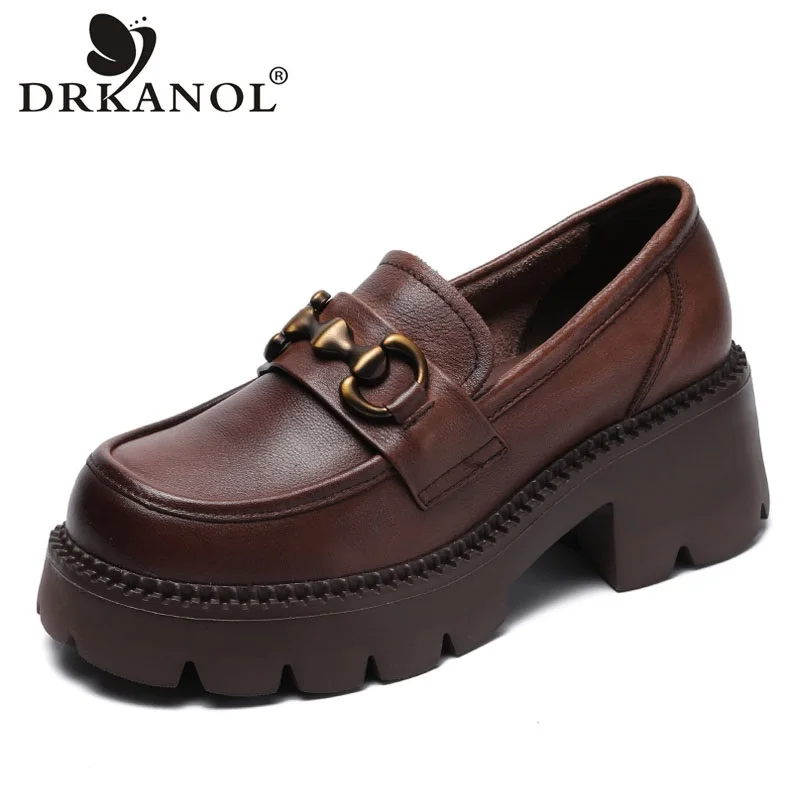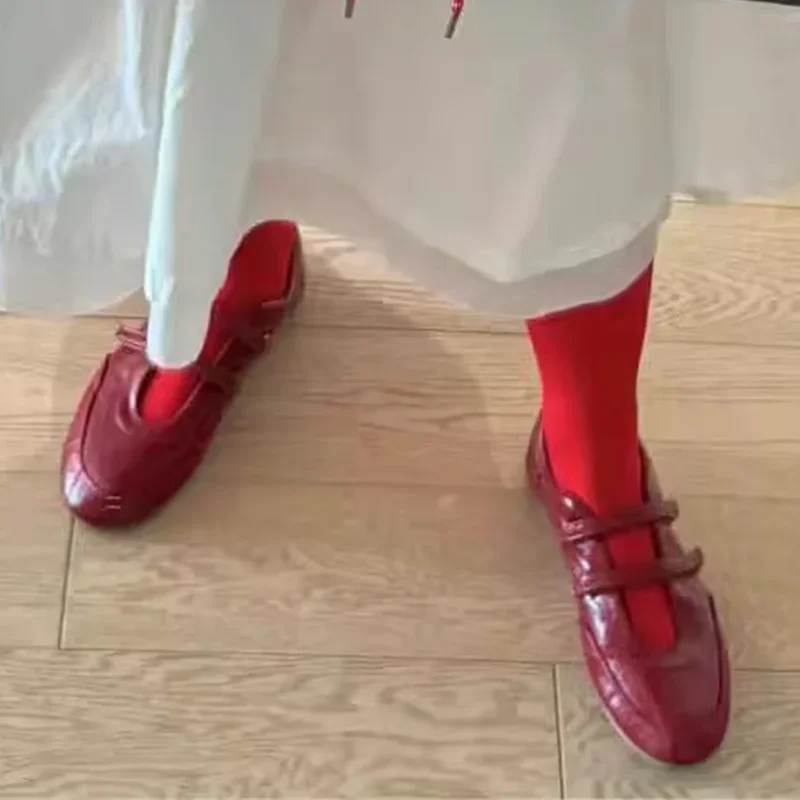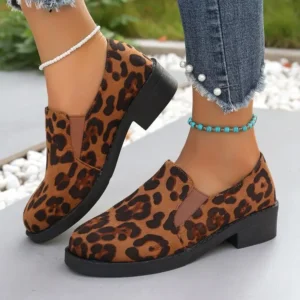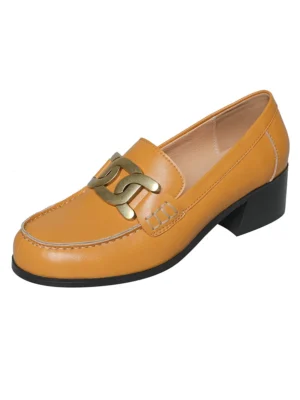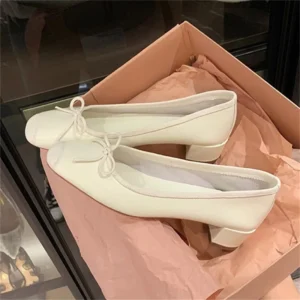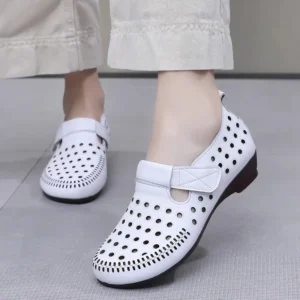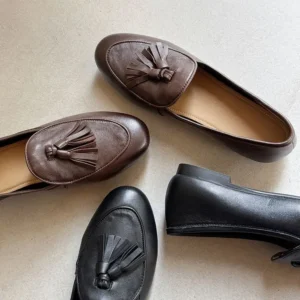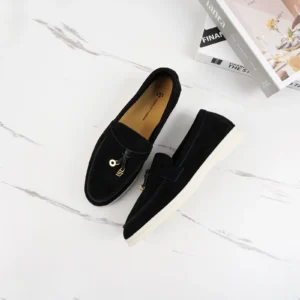Introduction
We’ve all been there – standing in a shoe store, torn between a stylish pair of loafers that pinch our toes and a comfortable pair that lacks aesthetic appeal. The struggle to find footwear that blends style with genuine comfort is real, especially when it comes to loafers. Traditional designs often create painful pressure points, cause foot fatigue, and leave us with pinched toes by day’s end.
But what if you could have both style and comfort? Enter round toe loafers – the superior solution that addresses common foot pain while maintaining a polished appearance. Unlike their pointed counterparts, round toe loafers provide ample space for your toes to rest naturally, reducing pressure and discomfort throughout the day.
In this comprehensive guide, we’ll walk you through selecting the perfect comfortable round toe loafers with expert insights on:
- Essential design features that enhance comfort
- Material selection that impacts wearability
- Fit considerations for different foot types
- Solutions for specific foot concerns
According to the American Podiatric Medical Association, nearly 8 in 10 adults experience foot pain, with improper footwear being a leading cause. Understanding the essential benefits of round toe loafers can transform your daily comfort and foot health.
Whether you’re standing all day at work or seeking everyday comfort without sacrificing style, this guide will help you navigate the world of women’s round toe flat loafers and find your perfect pair.
Why Round Toe Loafers Deliver Superior Comfort
When comparing footwear options, the difference between round toe and pointed toe designs isn’t merely aesthetic – it’s anatomical. Our feet aren’t naturally pointed at the end; they have a rounded shape with toes that need space to spread and flex. Understanding how shoe toe shape dictates comfort helps explain why round toe loafers provide superior comfort.
The anatomy of a round toe box mimics the natural shape of your foot. When you stand, your toes naturally spread to provide balance and stability. Round toe loafers accommodate this spreading, allowing toes to sit in their natural position rather than being forced together. This proper alignment is crucial for comfort during extended wear.
Pressure distribution is another key factor. In pointed toe designs, force concentrates at the tip, compressing toes into an unnatural triangle. This creates pressure points that can lead to pain and even deformities over time. Round toe designs, however, distribute pressure evenly across the forefoot, preventing any single area from bearing excessive force.
The long-term benefits of round toe shoes for daily wear are significant. Proper toe splay prevents issues like bunions, hammertoes, and neuromas (painful nerve compressions between toes). When toes have adequate space, blood circulation improves, reducing numbness and discomfort during long periods of standing or walking.
Many people mistakenly believe that choosing comfort means sacrificing style. Modern round toe loafers dispel this myth, offering sophisticated designs that don’t compromise on aesthetics. The subtle rounding provides comfort without the clunky appearance some associate with “comfort shoes.”
Understanding the differences between round and pointed toe shoes helps explain why podiatrists consistently recommend round toe options for everyday wear. The natural alignment they provide supports overall foot health while still delivering the classic, sophisticated look loafers are known for.
Essential Comfort Features to Look For in Round Toe Loafers
Superior Cushioning Systems
The foundation of any comfortable loafer begins with its cushioning system. Not all cushioning is created equal – the material, placement, and density all contribute to how a loafer feels during all-day wear.
Quality comfortable flat loafers typically feature one or more of these cushioning materials:
- Memory foam: Conforms to your foot’s unique shape for personalized comfort
- EVA (ethylene vinyl acetate): Lightweight with excellent shock absorption
- Poron: Maintains cushioning properties longer than traditional foams
- Gel inserts: Targets high-pressure areas like the heel and ball of foot
Full-length cushioning is superior to spot cushioning, as it supports your entire foot rather than just certain areas. Look for loafers with cushioning that extends from heel to toe for comprehensive comfort.
The ideal cushioning density varies based on your weight and typical activities. Heavier individuals generally benefit from firmer cushioning that won’t compress completely, while lighter people might prefer softer materials. Quality cushioning should recover its shape quickly when pressed and show minimal compression lines after wear.
Proper Arch Support
Arch support is perhaps the most critical element in preventing foot fatigue. Your arch acts as a natural shock absorber, and proper support helps it function effectively.
Different foot types require different levels of arch support:
- High arches need cushioned support that fills the higher arch gap
- Normal arches benefit from moderate, contoured support
- Flat feet require gentle support that doesn’t create pressure points
Well-designed loafers integrate arch support seamlessly into the overall construction, placing it precisely where your foot’s arch falls. This integration ensures the support remains effective throughout the shoe’s lifespan.
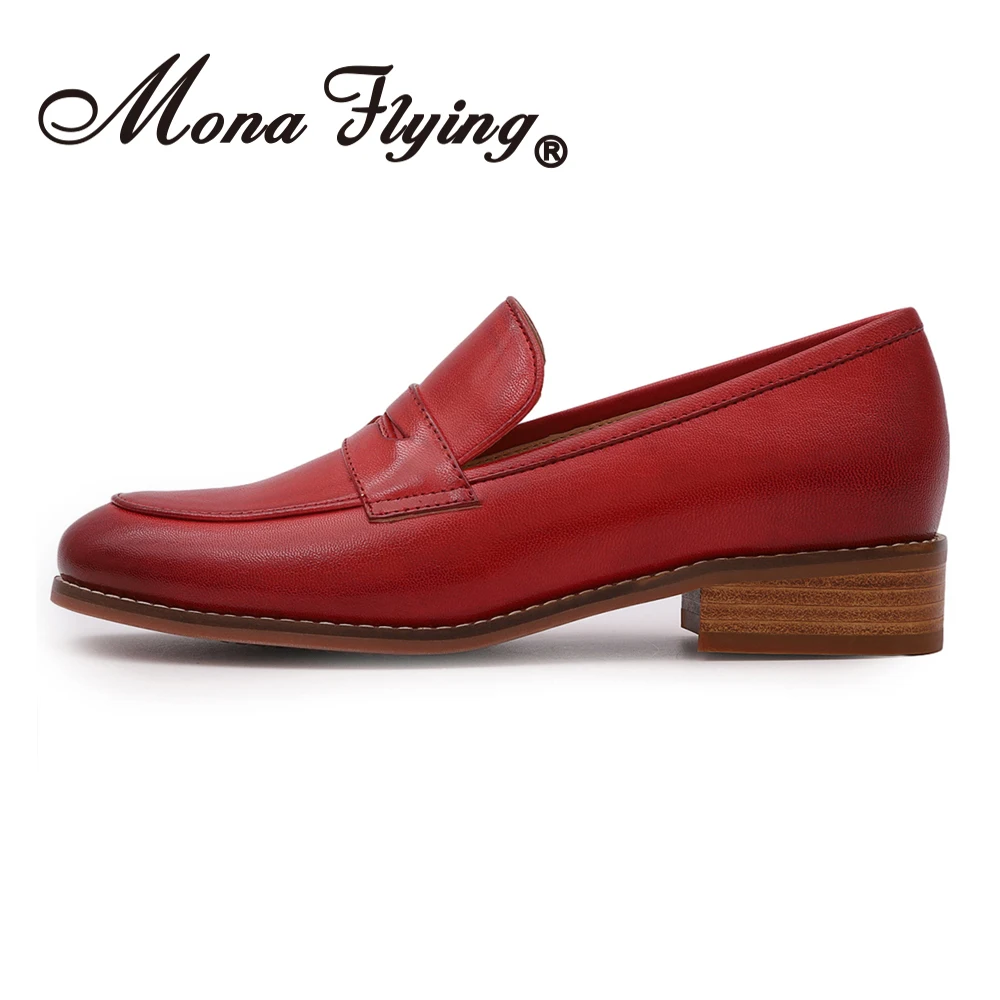
Flexible Yet Supportive Sole Construction
The perfect loafer sole achieves a delicate balance between flexibility and support. Understanding the ultimate guide to foot-friendly loafer design reveals how this balance contributes to comfort.
Ideal materials for loafer soles include:
– Natural rubber: Offers excellent flexibility with adequate durability
– Polyurethane: Provides lightweight cushioning with good longevity
– Leather with rubber inserts: Combines classic appearance with modern comfort
The most comfortable loafers feature strategic flexibility points that align with your foot’s natural bending zones – primarily at the ball of the foot. These flexibility points allow natural movement while still providing structure.
Shock absorption becomes particularly important when walking on hard surfaces. Look for soles with visible shock-absorbing features like air pockets, gel inserts, or graduated density materials that soften impact.
Traction is an often overlooked comfort feature – inadequate grip leads to muscle tension as your body works to prevent slipping. Subtle tread patterns provide stability without compromising the loafer’s refined appearance.
Quality Upper Materials and Breathable Design
Upper materials significantly influence both immediate comfort and how the loafer feels after extended wear. Premium leather flat loafers offer unique advantages as they gradually conform to your foot shape.
Quality upper materials should:
– Soften and mold to your foot shape without stretching excessively
– Provide adequate breathability to prevent moisture buildup
– Maintain structural integrity to support the foot
– Feel soft against the skin without rough edges or stiff sections
Seamless construction techniques reduce potential irritation points where materials join together. Look for minimal stitching in areas that flex frequently or press against sensitive parts of your foot.
Lining materials directly contact your foot and significantly impact comfort. Leather linings offer excellent breathability and moisture management, while padded textiles can provide additional cushioning in key areas.
Proper Fit Characteristics
Even the most well-designed loafer won’t be comfortable if it doesn’t fit properly. Understanding definitive footwear design for comfort helps identify these essential fit characteristics:
- Heel grip that prevents slipping without pinching
- Adequate toe room that allows natural toe splay
- Proper instep fit that secures the foot without pressure
- Appropriate depth to accommodate your foot’s volume
- Balanced width that supports without squeezing
Quality construction maintains these fit characteristics throughout the loafer’s lifespan. Look for reinforced heel counters, well-attached insoles, and consistent stitching that won’t loosen with wear.
Addressing Specific Foot Concerns with Round Toe Loafers
For Wide Feet or Bunions
Finding comfortable, stylish round toe loafers can be particularly challenging for those with wide feet or bunions. The toe box width becomes the most critical measurement, not just the standard shoe width.
Look for these features:
– Wide toe boxes with at least ½ inch of space beyond your widest point
– Upper materials with natural stretch, like soft leather or suede
– Designs with minimal seams across the bunion area
– Adjustable features like elastic goring that accommodate foot width
Brands that consistently accommodate wider feet often have dedicated wide-width options or naturally wider lasts (the foot-shaped mold shoes are built around).
To evaluate if a loafer will provide adequate width, insert your finger between your foot and the shoe’s upper when standing. You should have slight wiggle room without excessive gapping.
For High Arches
High arches create unique challenges, as weight concentrates on the heel and ball of the foot rather than distributing evenly.
For high-arched feet, prioritize:
– Enhanced cushioning under the metatarsal heads (ball of foot)
– Deeper heel cups that cradle and stabilize the rearfoot
– Adequate volume through the midfoot to prevent pressure on the arch
– Contoured footbeds rather than completely flat insoles
The ideal loafer for high arches provides support without attempting to “correct” the natural arch height, which can create uncomfortable pressure points.
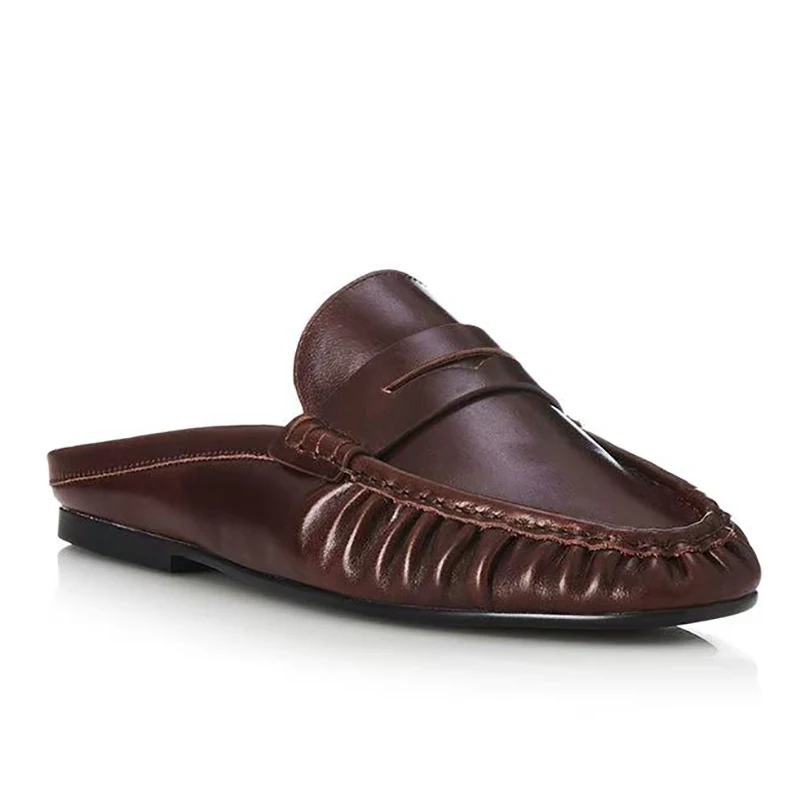
For Flat Feet
Flat feet benefit from structured support that helps create a functional arch without causing discomfort.
Key features for flat feet include:
– Graduated arch support that gently lifts the midfoot
– Motion control elements that prevent excessive inward rolling
– Firmer midsoles that provide stability
– Extended medial (inner) support that guides proper foot alignment
The support should feel like it’s cradling your foot rather than pushing uncomfortably against it. A gradual break-in period may be necessary as your feet adjust to proper support.
For All-Day Standing or Walking
Those who spend hours on their feet need round toe loafers for walking with enhanced endurance features.
Look for:
– Energy-return technologies that reduce fatigue
– Substantial heel cushioning that absorbs repeated impact
– Lightweight construction to reduce the effort of each step
– Durable materials that maintain their supportive properties over time
Loafers designed for extended wear often have removable insoles that can be refreshed or replaced when cushioning compresses over time.
For Sensitive Feet or Circulation Issues
Sensitive feet require special consideration to avoid pressure points and irritation.
Beneficial features include:
– Fully padded collars and tongues to eliminate edge pressure
– Pressure-free zones over common problem areas like bunions
– Adjustable features to accommodate foot size fluctuations
– Temperature-regulating materials that prevent overheating
Seamless construction becomes particularly important, as even small seams can create significant discomfort for sensitive feet.
Top-Rated Round Toe Loafers for Exceptional Comfort
Finding the perfect pair of comfortable round toe loafers involves considering multiple factors including cushioning, support, flexibility, and fit. After evaluating dozens of options based on construction quality, comfort technologies, and user feedback, these loafers stand out for their exceptional comfort combined with stylish design.
Each recommendation below has been assessed for:
– Overall comfort during extended wear
– Quality of materials and construction
– Support features and cushioning technology
– Versatility and style considerations
– Value relative to price point
Classic Leather Penny Loafer with Memory Foam
Comfort Rating: 9.5/10
This timeless design combines traditional styling with modern comfort technology. The standout feature is the full-length memory foam footbed that adapts to your unique foot shape while providing consistent support.
Construction Highlights:
– Premium full-grain leather upper that softens beautifully with wear
– Seamless forefoot design eliminates pressure points
– Breathable leather lining wicks moisture effectively
– Shock-absorbing rubber outsole with leather wrap for classic appearance
Best For: Office environments, business casual settings, and weekend wear
Ideal Foot Types: Normal to slightly wide feet; excellent for those with heel sensitivity
Price Range: $110-$150
Pros:
– Exceptional heel stability prevents slipping
– Memory foam retains shape longer than typical foam insoles
– Versatile style works with both casual and dressier outfits
Cons:
– Limited arch support for very flat or high-arched feet
– Break-in period of approximately 1-2 weeks for upper leather
Cushioned Suede Round Toe Loafer
Comfort Rating: 9/10
These suede loafers excel at providing comfort right out of the box with minimal break-in required. The distinctively soft upper material combines with advanced cushioning technology to create an exceptionally comfortable experience.
Construction Highlights:
– Buttery soft suede upper conforms immediately to foot shape
– Dual-density footbed with gel insert at pressure points
– Flexible rubber sole with ergonomic tread pattern
– Extra padding around collar prevents heel irritation
Best For: Casual settings, travel, and moderate walking days
Ideal Foot Types: Medium to wide feet; excellent for those with forefoot sensitivity
Price Range: $90-$120
Pros:
– Immediate comfort with virtually no break-in period
– Excellent shock absorption for city walking
– Available in extended width options
Cons:
– Suede requires more maintenance than smooth leather
– Less structured support for those who need firm arch reinforcement
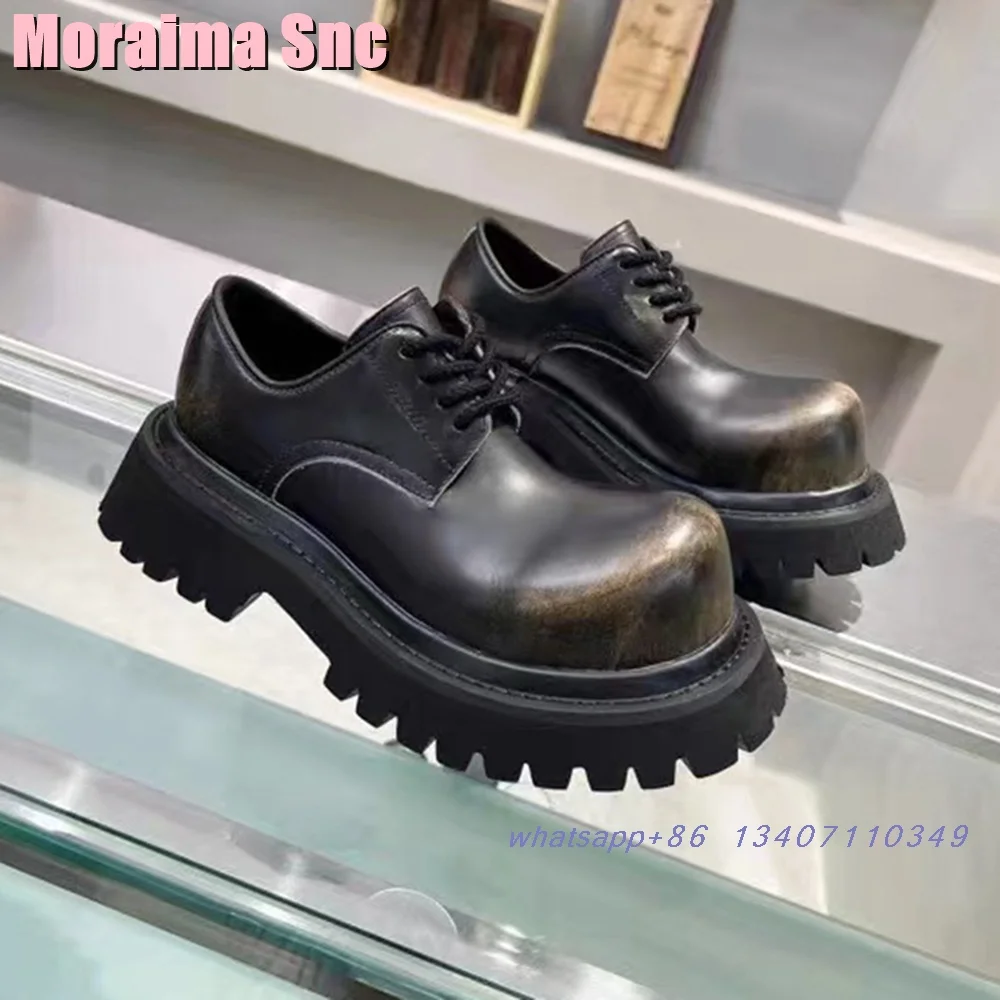
Orthotic-Friendly Leather Loafer
Comfort Rating: 9.7/10
Designed with foot health as the priority, these loafers feature removable footbeds that accommodate custom orthotics while maintaining a sleek, stylish appearance.
Construction Highlights:
– Premium leather with strategic stretch panels for bunions
– Removable anatomic footbed with deep heel cup
– Extra depth design accommodates custom orthotics
– Lightweight polyurethane sole with air cushioning
Best For: All-day wear, professional environments requiring extended standing
Ideal Foot Types: Problem feet requiring orthotics; excellent for plantar fasciitis sufferers
Price Range: $130-$180
Pros:
– Medical-grade arch support can be customized
– Accommodates foot changes throughout the day
– Rocker sole design reduces pressure on forefoot
Cons:
– Slightly wider appearance than sleeker fashion loafers
– Higher price point reflects specialized construction
Lightweight Knit Round Toe Loafer
Comfort Rating: 8.5/10
These innovative loafers use modern knit technology to create a breathable, flexible upper that moves naturally with your foot while maintaining the classic loafer silhouette.
Construction Highlights:
– Engineered knit upper provides targeted zones of stretch and support
– Responsive foam cushioning with excellent energy return
– Featherlight EVA outsole reduces walking effort
– Seamless construction eliminates all potential friction points
Best For: Casual wear, travel, warm weather, and light walking
Ideal Foot Types: Normal to narrow feet; excellent for those seeking lightweight options
Price Range: $80-$110
Pros:
– Exceptionally lightweight and packable for travel
– Superior breathability prevents overheating
– Machine washable for easy maintenance
Cons:
– Less structured support than leather options
– Casual appearance may not suit formal settings
– Less durable than traditional materials
Premium Driving Loafer with Arch Support
Comfort Rating: 9/10
These driving loafers elevate the traditionally flat driving shoe by incorporating substantial arch support and cushioning while maintaining the flexible, responsive feel drivers appreciate.
Construction Highlights:
– Soft-tumbled leather or suede upper with extended fit range
– Contoured footbed with pronounced arch support
– Extended heel cushioning protects during extended driving
– Flexible rubber nubs extend up heel for driving position comfort
Best For: Driving, casual outings, and travel days with varied activities
Ideal Foot Types: High arches; those needing arch support in a flexible shoe
Price Range: $100-$140
Pros:
– Perfect balance of flexibility and support
– Excellent ground feel with adequate cushioning
– Versatile enough for driving and moderate walking
Cons:
– Nubbed sole wears more quickly with extensive walking on concrete
– Less suited to formal professional environments
Our carefully selected flat classic loafers combine timeless design with contemporary comfort features, ensuring you don’t need to choose between style and comfort.
Women's Comfortable Flat Loafers, Women's Leopard Print Loafers, Women's Low Heel Loafers
$82.50 Select options This product has multiple variants. The options may be chosen on the product pageWomen's Block Heel Loafers, Women's Heeled Penny Loafers, Women's Monk Strap Loafers
$194.04 Select options This product has multiple variants. The options may be chosen on the product pageWomen's Block Heel Loafers, Women's Square Heel Loafers, Women's Square Toe Flat Loafers
Price range: $73.61 through $86.41 Select options This product has multiple variants. The options may be chosen on the product pageWomen's Comfortable Flat Loafers, Women's Leather Flat Loafers, Women's Round Toe Flat Loafers
$124.88 Select options This product has multiple variants. The options may be chosen on the product pageWomen's Black Flat Loafers, Women's Black Penny Loafers, Women's Classic Tassel Loafers
$194.28 Select options This product has multiple variants. The options may be chosen on the product pageWomen's Loafer Mules, Women's Suede Flat Loafers
$190.23 Select options This product has multiple variants. The options may be chosen on the product page
Finding Your Perfect Fit: Sizing and Selection Guide
Finding the right fit is crucial for experiencing the full comfort benefits of round toe loafers. Follow these steps to ensure you select the perfect size:
Measure Accurately
- Measure your feet in the late afternoon when they’re at their largest
- Stand on a piece of paper and trace around each foot
- Measure the length from heel to longest toe
- Measure the width at the widest part (usually across the ball of foot)
- Measure both feet and use the larger measurements
Remember that foot size can change over time due to aging, weight changes, or pregnancy. Re-measuring annually ensures you’re working with current dimensions.
Navigate Brand Sizing Differences
Significant sizing variations exist between brands and even between different styles from the same brand. When trying a new brand:
- Research whether they run true to size, large, or small
- Look for sizing recommendations from the manufacturer
- Consider ordering two sizes if purchasing online
- Check return policies before ordering
European and American sizing systems differ substantially. A size 39 EU is approximately a 8-8.5 US, while a size 40 EU corresponds to about a 9-9.5 US.
Width Considerations
Standard width measurements use letters (B=standard women’s width, D=standard men’s width), with additional letters indicating narrower or wider options.
For optimal comfort:
– You should feel gentle contact around the perimeter of your foot
– No pinching or pressure points when standing
– About ¼-½ inch of space beyond your longest toe
– No slipping at the heel when walking
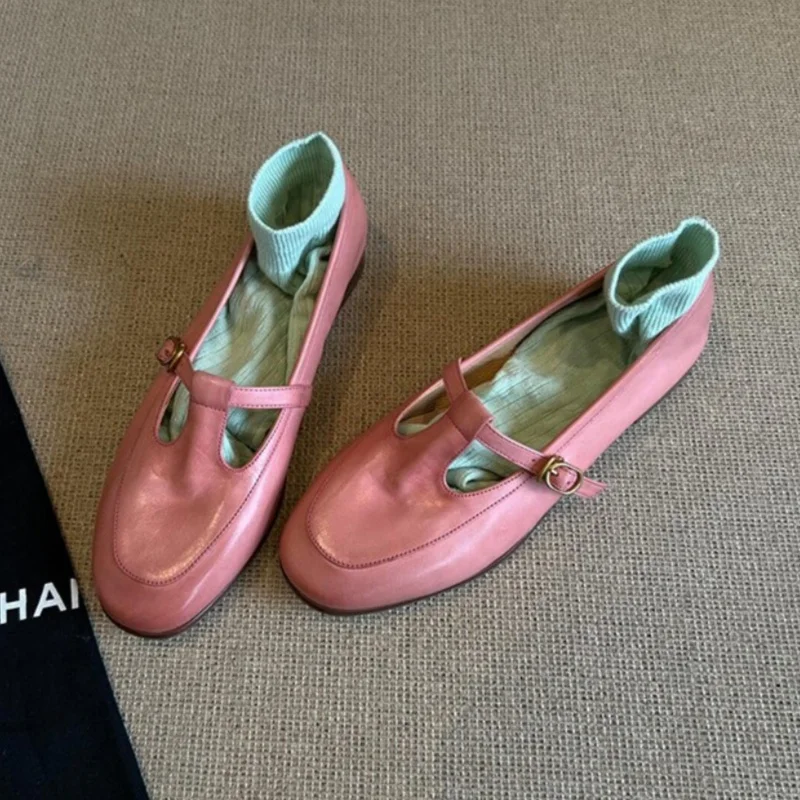
Trying On Best Practices
For the most accurate fit assessment:
– Try on shoes in the afternoon or evening
– Wear the socks or hosiery you’ll typically pair with the loafers
– Walk on different surfaces (carpet and hard floor)
– Stand for at least 2-3 minutes to allow your foot to settle
– Check for any areas of pressure or rubbing
Signs of Proper Fit
A well-fitting loafer will:
– Secure your heel without slipping or pinching
– Allow your toes to lie flat without curling or pressing
– Support your arch in its natural position
– Feel secure across the instep without pinching
– Allow slight movement without friction
Fit Troubleshooting
Common fit issues and solutions include:
– Heel slipping: Try heel grips or inserts to improve fit
– Toe pressure: Look for wider toe box styles
– Arch pain: Seek more supportive models or add inserts
– Gap at sides: Try narrower width or styles with different upper patterns
– Overall tightness: Consider professional stretching for leather loafers
Digital fitting tools and virtual sizing guides offered by many retailers can provide guidance when shopping online for comfortable walking loafers.
Care and Maintenance for Lasting Comfort
Proper care not only extends the life of your loafers but also preserves their comfort features. Different materials require specific approaches to maintain their supportive qualities.
Leather Loafers
Leather heeled loafers and flat styles require regular attention:
- Clean with a damp cloth and mild soap to remove dirt
- Apply leather conditioner every 1-2 months to prevent drying and cracking
- Use shoe trees when not wearing to maintain shape and absorb moisture
- Allow 24 hours between wears to fully dry and recover
- Apply water and stain protector, especially for lighter colors
Suede Loafers
Suede requires special handling:
– Brush gently with a suede brush to remove dirt and restore nap
– Use specialized suede protector before first wear
– Address stains immediately with a suede eraser
– Never use water or liquid cleaners directly on suede
– Keep away from direct heat sources which can damage the material
Fabric and Synthetic Loafers
For non-leather options:
– Spot clean with mild soap and water
– Allow to air dry completely away from direct heat
– Use fabric protector spray to prevent staining
– Refresh insoles with baking soda overnight to absorb odors
Maintaining Comfort Elements
To preserve the supportive features:
– Replace insoles when they show significant compression or wear
– Check outsoles regularly for wear patterns that might affect comfort
– Address heel wear promptly to prevent altered gait patterns
– Consider professional resoling for premium loafers with worn soles
Signs that indicate professional attention is needed include asymmetrical wear patterns, visible separation between upper and sole, or compressed cushioning that no longer recovers its shape.
Beyond Basic Comfort: Specialized Features for Unique Needs
The world of comfortable footwear continues to evolve, offering specialized features for those with unique requirements or specific comfort preferences.
Advanced comfort technologies worth exploring include:
– Air-cushioned chambers that provide responsive support
– Temperature-regulating materials that keep feet cool
– Zero-drop designs that promote natural foot alignment
– Antimicrobial treatments that prevent odor development
For those who require orthotics, look for block heel loafers and flat styles with:
– Removable factory insoles with adequate depth beneath
– Wider toe boxes that accommodate the additional volume
– Secure uppers that prevent movement when using orthotics
– Deep heel cups that work with orthotic heel stabilizers
Customization possibilities have expanded beyond traditional breaking-in. Some brands offer heat-moldable components that conform precisely to your foot shape after brief heating. Others provide modular designs where cushioning elements can be added or removed based on personal preference.
Sustainable comfort is an emerging focus, with eco-friendly materials delivering impressive comfort properties:
– Recycled foam cushioning with performance equal to virgin materials
– Plant-based leather alternatives with excellent breathability
– Responsibly sourced natural rubber for flexible, durable soles
– Recycled textiles that provide moisture management
For those balancing professional dress codes with comfort needs, modern designs offer discreet comfort features that maintain appropriate workplace appearance. Look for traditional styling with hidden comfort elements like gel inserts, flexible construction, and breathable linings.
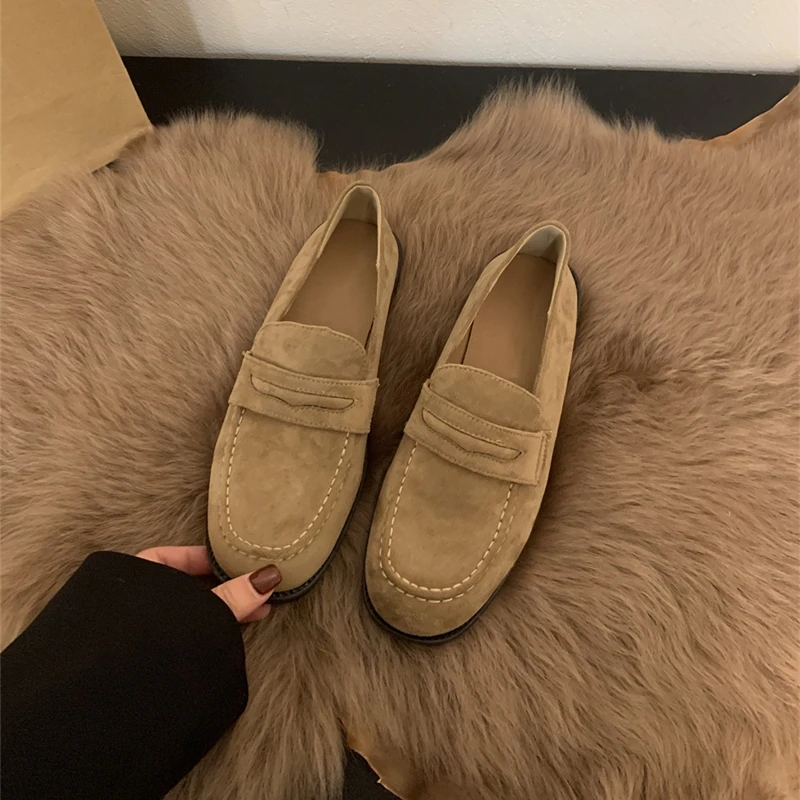
Frequently Asked Questions About Comfortable Round Toe Loafers
Are round toe loafers appropriate for formal occasions?
Round toe loafers can absolutely work for many formal situations, especially when crafted from high-quality materials like polished leather. For the most formal events, choose sleek designs in black or dark brown leather with minimal ornamentation. Classic penny loafers in particular have long been accepted in business and semi-formal settings.
How long should a quality comfort loafer last with regular wear?
With proper care, premium comfort loafers typically last 2-4 years with regular rotation (wearing 2-3 times per week). The comfort features like cushioning may compress and lose effectiveness before the upper shows significant wear. Quality construction with replaceable components can extend the functional life significantly.
Can I add my own orthotics to round toe loafers?
Many round toe loafers accommodate custom orthotics, but look specifically for styles with removable insoles and adequate depth. Loafers designed with orthotic use in mind typically have a straighter last (the foot-shaped form shoes are built around) and more volume in the toe box to accommodate the additional thickness.
What’s the best way to break in new loafers without discomfort?
Start with brief wearing periods (1-2 hours) at home on carpeted surfaces. Gradually increase wearing time over 1-2 weeks. For leather loafers, leather conditioner applied to tight areas can accelerate the process. Consider using moleskin or similar protective padding on areas prone to rubbing until the shoes conform to your feet.
How much should I expect to invest in truly comfortable loafers?
Quality comfortable loafers typically start around $80-$100, with premium options ranging from $130-$200+. While higher price doesn’t guarantee comfort, it often correlates with better materials, construction methods, and comfort technologies. Consider the cost-per-wear: a $150 pair worn 100 times costs $1.50 per wear – a worthwhile investment for all-day comfort.
Can comfortable round toe loafers help with specific foot conditions?
Yes, properly designed round toe loafers can help manage several common foot conditions. The spacious toe box reduces pressure on bunions and hammertoes. Styles with appropriate arch support can alleviate plantar fasciitis symptoms. Cushioned options help those with fat pad atrophy or metatarsalgia. However, for serious foot conditions, consult a podiatrist for specific recommendations.
How to Transition to Wearing Round Toe Loafers
If you’re accustomed to pointed shoes or less supportive styles, transitioning to properly designed round toe loafers requires some adjustment as your feet adapt to improved alignment and support.
Start with a gradual transition schedule:
1. Wear your new comfort loafers for 2-3 hours the first day
2. Increase wearing time by 1-2 hours each subsequent day
3. Alternate with your previous footwear for the first 1-2 weeks
4. Pay attention to any new sensations or minor discomfort
5. By week 3, most people can comfortably wear their new loafers all day
During this adjustment period, you may notice:
– Muscles in your feet and lower legs working differently
– Temporary fatigue as your body adapts to proper alignment
– Changed pressure patterns across your feet
– Improved comfort during standing and walking
Address minor adjustment discomfort with:
– Gentle foot stretches and massage at the end of the day
– Proper hydration to support muscle recovery
– Patience through the adaptation period
– Appropriate socks that complement your new footwear
Building a rotation of supportive footwear extends the life of each pair while providing options for different activities. Consider having:
– Dressier round toe loafers for professional settings
– Casual options for weekends
– Support-focused styles for high-activity days
Positive signs that your feet are benefiting include reduced evening foot fatigue, decreased pain in previously problematic areas, improved balance, and greater comfort when standing for extended periods.
The Long-Term Benefits of Choosing Comfort-First Loafers
Investing in quality low heel loafers with proper comfort features delivers benefits that extend far beyond your feet.
Proper footwear contributes significantly to overall posture and alignment. When your feet are properly supported, your body naturally aligns from the ground up. This improved alignment reduces strain on your ankles, knees, hips, and lower back. Many people report decreased back pain after switching to properly supportive footwear.
The reduction in daily fatigue and pain is perhaps the most immediate benefit. When your feet aren’t constantly sending pain signals, you conserve mental and physical energy. This translates to greater productivity, improved mood, and more energy for activities you enjoy after work hours.
Preventing foot conditions before they develop is far easier than treating them once established. Round toe loafers with proper support help prevent:
– Bunions and hammertoes from toe compression
– Plantar fasciitis from inadequate arch support
– Neuromas from squeezed toe boxes
– General foot fatigue from inadequate cushioning
The connection between foot comfort and overall well-being is increasingly recognized by health professionals. Comfortable feet contribute to increased physical activity levels, better circulation, reduced stress, and improved quality of life.
From a financial perspective, investing in quality comfort footwear makes sense. The combined costs of treating foot problems, lost productivity due to pain, and replacing cheaply made shoes quickly exceeds the investment in well-made comfort-focused loafers.
At Artisan Haul, we understand that truly comfortable footwear doesn’t require compromising on style. Our curated selection represents the perfect marriage of timeless design and innovative comfort technology – because we believe every step you take should be a comfortable one.
